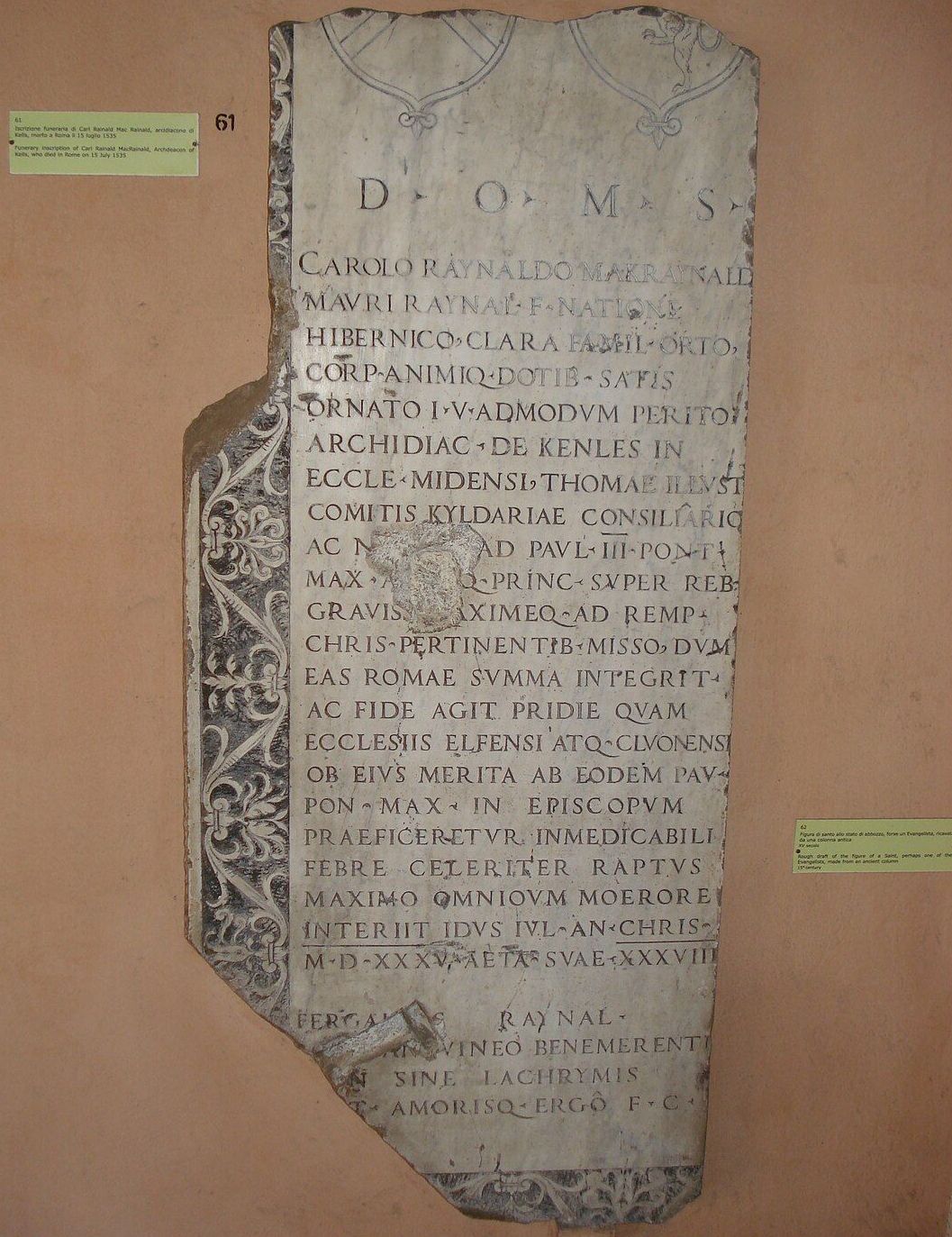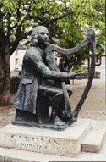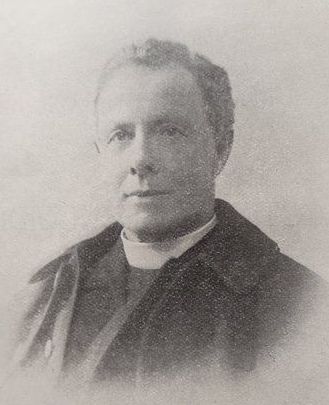Building History & Heritage into the Mohill Public Realm Plan
In consultation with Mohill Historical Society, in November 2020, I made a submission to Leitrim County Council on its proposed Public Realm Improvement plan for Mohill town.
The focus of the submission was a request to build more historical and heritage references into the plan - reminding the Council of Mohill's unique and comprehensive 15 centuries of visible history.
Some pages from the submission are below.
Access the original Leitrim County Council documents here >>>
For the full submission (and higher resolution text), click here or the button below >>>>
Notable Mohill people
Most of the people here were found by my brother, and the pieces posted on the original Mohill.com website back in the late 1990s (yes - 1990s!).
Read about people associated with the War of Independence and Civil War era here >>>
Lord Leitrim is covered in the History section, since most of this website deals with his era.
_________________
In 2018, I asked OldMohill members on Facebook to suggest famous Mohill people: see their suggestions here >>>

Charles Reynolds (Cathal Mac Raghnaill) (c1496 – July 1535)
(Also Carolo Rayaldo Makraynald, and Magrannel)
Charles Reynolds was born in 1496 or 1497 in Mohill. His father was Maurus Mac Raghnaill, canon in the Church of Ardagh. By 15, he was a novice at the Augustinian Priory of St Mary in Mohill and became fluent in English, Irish and Latin. He later was educated at the University of Oxford. Reynolds opposed Henry VIII of England's separation from the Catholic Church, declining to acknowledge him as Supreme Head of the Church of England and refusing to acknowledge the annulment of his marriage to Catherine of Aragon.
During the Kildare Rebellion of 1534–5 against King Henry, Reynolds was dispatched as envoy to Rome to seek support from the Pope. In May 1535 he secured a papal promise to excommunicate King Henry of England.
Reynolds died of an ‘incurable fever’ and was buried in Archbasilica of St. John Lateran on 15 July 1535. Reynolds was convicted (attainted) of high treason in 1536.
Read more at https://en.wikipedia.org/wiki/Charles_Reynolds_(cleric) and https://www.wikiwand.com/en/Charles_Reynolds_(cleric)

Turlough O'Carolan (1670-1738)
_______________
The statue of Turlough O'Carolan in Mohill is by sculptor Oisín Kelly (1915-1981) whose other works include the statue of Jim Larkin in O'Connell St. in Dublin. Kelly was working on the statue of O'Carolan when he died, and the unfinished plaster model was prepared for casting by Lorna Skrine, who had been his assistant before his death. The finished bronze was unveiled in Mohill by President Hillery on 10th August 1986.
________
Turlough O'Carolan (Toirdhealbhach Ó Cearbhalláin) was one of Ireland's best music composers and harpists, and is remembered as the 'last of the Irish bards'. He spent most of his life as a travelling harpist. It is believed that O'Carolan composed over 200 pieces, most of which were not written down during his lifetime. His most famous work is probably Carolan's concerto.
O'Carolan was born at Nobber, Co. Meath, in 1670 and moved with his father to near Carrick-on-Shannon in 1688. Here he attracted the attention of Mrs McDermot Roe who, impressed with his aptitude for music, brought him to her house and had him educated with her own children, and where he learned to play the harp. At 22, a violent attack of small pox left him totally blind.
His chief patrons remained Mrs McDermot Roe of Alderford, Ballyfarnon. He was also supported by the O'Conor Don of Belinagare which effectively became his home.
In 1720, at the age of 50, O'Carolan married Mary Maguire. They established their home near Mohill and had seven children, six daughters and one son. Mary died in 1733.
_____
Read more at LibraryIreland, and also a piece by Rev Canon Masterson here.
A fictional biography
'Turlough' by Brian Keenan is an excellent read.

Rev Joseph G. Digges (1858-1933)
_______________
Rev Joseph G. Digges lived at Clooncahir, Mohill. He is regarded as the father of Irish Beekeeping.
Modern Irish beekeeping owes much to a local man, the Reverend Joseph Robert Garven Digges, who although born in Dublin, he spent much of his life in Mohill, Co. Leitrim. Educated at the High School of Erasmus Smith in Harcourt St., Dublin, he later entered Trinity College as a pensioner in 1879, being awarded the degree of B.A.(Resp.) in 1882 and in 1885 an M.A. Ordained in 1883, he became deacon in Kilmore, Co. Cavan, and then curate in Mohill until 1884 and then 1884-5 at St. George's, High St., Belfast. In 1885, he became the private chaplain to the Clements family (the earls of Leitrim) at their Lough Rynn estate at Mohill. He served Farnaght and Mohill churches and from 1933 the parish of Cloone.
The Reverend Digges had his first bee-keeping lesson in 1885, at Clooncahir, and thereafter was hooked. He joined the Irish Beekeepers Association and was chairman from 1910 to 1921. He was editor of the Irish Bee Journal, (from 1912 called The Beekeeper's Gazette) published from May 1901 to October 1933. In the 33 years of publication, he only missed 4 issues - the May 1916 issue was blown up on the way to the printers during the Easter rising of that year.
Becoming proficient in bee-keeping, and anxious to promote the method of removing the honey crop from the hive without killing the bees, by using moveable frames, he started travelling extensively throughout Ireland on behalf of the Department of Agriculture and Technical Instruction, attending agricultural shows and lecturing. He promoted the "Congested Districts Hive", designed to be made and used in the poorer areas of Ireland to provide an income where the land was poor.
A great believer in promoting local industry, he helped to found the local co-operative creamery and the bank in Mohill, and was a director of the Cavan & Leitrim railway and also of the Arigna mines. Digges "was to earn high repute as a first class trouble shooter" (Flanagan, "The Cavan & Leitrim Railway" 1966) and was always sent in when problems arose.
He also published a book: The Irish Bee Guide, later renamed The Practical Bee Guide. A Manual of Modern Beekeeping, a book which came to be regarded as the standard book of bee keeping in Ireland. The book went through many revisions and reprints following its initial publication in 1904. It was self published in 1904 (by Lough Rynn Press), by the 4th edition in 1918, the publishers were Simpkin Marshall Hamilton Kent & Co. Ltd. London - later it was published by Talbot press, Dublin until its 16th edition in 1950. It sold 76,000 copies. The book was republished in 2004 to celebrate its centenary of publication.
He died dramatically during a confirmation service in Farnaght in 1933 and is buried in Mount Jerome cemetery in Dublin, beside his wife who had died in 1926. He had married Edith Bate in Belfast in 1885 and they had a son and daughter, spending their life in great comfort in the beautiful rectory at Clooncahir. A splendid stained-glass memorial window by Ethel Rhind (1877-1952) was placed in the church, which shows St. McDomnoc (Molagga) bringing the bees to Ireland.
_____
This text is based on an article by Petra Coffey and email of Jim Ryan)

Fr Tom Ellis (1906-1945)
St. Thomas of Mohill
_______________
Fr. Tom Ellis was a Mohill-born, missionary priest, who died in 1945 in China. He is revered in China and the cause for his canonisation was actively pursued.
One of a family of five, Tom was the son of leather merchant Richard Ellis, Main St. Mohill, Co. Leitrim and his wife Ellen Jane Mahon. He was born on January 12, 1906.
As a small boy, he was educated firstly as an infant in St. Josephs and then on to the Boy's school, Mohill and finally as a boarder in St. Mel's, Longford. He studied for the priesthood in Maynooth and was ordained in April 1931. Shortly afterwards, he set off from Cobh, Co. Cork for the missions in Nancheng (now Hanzhong) China, then only five years in existence.
On his first day in his new land, Fr. Tom met a man suffering from dysentery lying on the street, brought him back to the church and washed him clean, thus beginning his labours for those in want, a work that would continue until his death 14 years later. Such were the qualities of Fr. Tom Ellis that soon he was attracting large numbers of local people, in search of material and spiritual help. Three years after going to Nancheng, on Christmas Eve 1934, with Fr. Dennehy, a total of 133 Baptisms were performed. Fr. Tom's practical side saw him helping the local people through starting handicraft industries and technology projects.
In June 1942, the Japanese army arrived in Nancheng, and life became more difficult for the population as a whole. Many stories are related of Fr. Tom's work in saving lives: on one occasion he stepped in front of Bishop Patrick Cleary while they were being shot at by the Japanese. He never spared himself and while giving a mission at Wangtien-Tang, he became ill, succumbing to typhoid fever on March 5th (or 8th) 1945.
The story is told that before he died, a Columban sister commented: "You work so hard, what saint will you be when you die?" to which he joked: "I'll be Saint Thomas of Mohill".
Soon after his death, it is said, he gave a sign to his fellow priests of impending trouble - just a month later, Bishop Cleary and all of the other priests were publicly tried and forced to flee China. The emergence of a communist government meant the suppression of Christianity. Despite this, believers flocked to Fr. Tom's grave in throngs, resulting in the desecration of the grave. His remains were removed to Shanghai for safety.
Bishop Cleary (1886-1970) later wrote a book on Fr. Tom and sent it to Rome, asking that Fr. Tom Ellis be canonised. A second book on his life, "Passing the Torch" has been written by Fr. Luke O'Reilly. It is claimed that two Chinese women, seriously ill have been cured after praying to him, and a Lutheran doctor, Dr. Otta Homberger, and Dr. Yeh have confirmed the reality of the cures. It is believed that a committee in Mohill is praying for his canonisation.
______
This is based on an un-credited article which appeared in 'The Irish Family', February 7, 2003.
Other famous Mohill people
In 2018, I asked OldMohill members on Facebook to suggest famous Mohill people: here is the list in alphabetical order.
- Alan Early, author
- Beirne Family, Ireland’s Fittest Family, 2017
- Chris Meehan, Barrister and long-time leader of Chris Meehan and his Redneck Friends
- Douglas Hyde (first president of Ireland), whose grandfather lived at The Glebe
- Eanna Madden, athlete
- Fred Dobson, dog breeder and competition winner
- Gerry O’Reilly, owner of Bad Bob’s club and The Gaiety Theater in Dublin in the 1980s
- James McCombs, New Zealand parliamentarian and liberal
- Jennifer Wrynne, milliner and style leader
- John Drummond, musician (and associated with theme tune from Wanderly Wagon)
- John Hart, 23rd Premier of British Columbia, Canada 1941-1947
- John Manning and Leo Boland, veteran heroes of Siege of Jadotville
- John McGahern, writer
- John Murray (of Tulcon), grandfather of James Joyce
- Katherine Lynch, actress, comedian, singer
- Lloyd Donnelly, master of Old Mohill Facebook Group!, keeping the community flame alive
- Matthew Sadlier, died on the Titanic
- Mohill Show Committee, keepers of the Mohill Show flame for decades
- Packy McGarty, great Leitrim footballer who played for Leitrim for four decades from 1949-1973
- Pádraic Óg Gallagher, Gallagher’s Boxty House, Temple Bar, Dublin and potato expert
- Pat Quinn, founder of Quinnsworth and inventor of term ‘yellow-pack’
- Patrick McGoohan, actor
- Philomena Barry, author
- Promenade, local band from 1988
- Rev. J.G. Digges, ‘Father of Irish bee-keeping’
- Teresa Bohan, first female GAA county board president GAA (Leitrim GAA 2001)
- Thomas Casey, sportsman (Guinness Book of Records?)
- Turlough O’Carolan, last Irish bard
- William Sydney Clements, Lord Leitrim

© Fiona Slevin | Last updated February 2024
This work is licensed under a Creative Commons Attribution-NonCommercial-ShareAlike 4.0 International License.